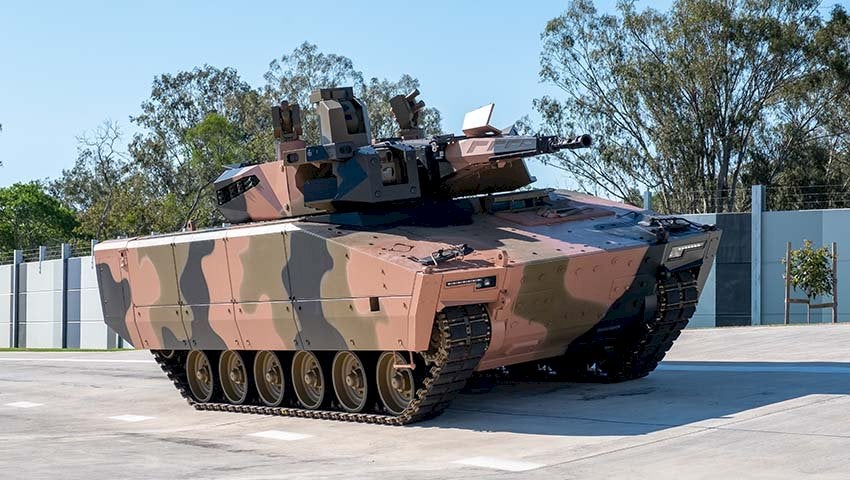Rheinmetall Demonstrates Spike Missile Integration On Lynx IFV
Rheinmetall has released footage of a live-fire test of a Spike anti-tank guided missile from the turret of its Lynx infantry fighting vehicle.
In the footage uploaded to YouTube, a prototype Lynx is shown launching a single Spike-LR missile against a static target. After the missile successfully hits its mark, the Lynx is seen retracting the Spike launcher.
Rheinmetall claims that the test demonstrates the “maturity and effectiveness of the most-modern tracked infantry fighting vehicle in the world”, adding that it is ready to integrate other new ATGMS “as they become available”.
Rheinmetall also jointly manufactures the Spike-LR with Diehl Defence, with the two companies working with original Spike manufacturer Rafael in the EuroSpike joint venture to market the Spike missile family in Europe. In German service, the Spike-LR is known as the MELLS (Mehrrollenfähiges Leichtes Lenkflugkörper-System or Multi-role Light Guided Missile System), and is replacing the MILAN anti-tank guided missile in both crew-served infantry use and on Marder 1A5 infantry fighting vehicles, as well as the TOW on Wiesel 1 weapons carriers.

The Lynx has been selected by Hungary to be its new standard infantry fighting vehicle, with Budapest being the Lynx’s launch, and so far only, operator. The Lynx is also competing in Australia’s Land 400 Phase 3 program for a new Australian infantry fighting vehicle against Hanwha’s AS21 Redback, while the Lynx variant competing in the American Optionally Manned Fighting Vehicle program will be equipped with a hybrid powertrain as well as the XM813 50mm autocannon.
In February, Rheinmetall debuted the Lynx 120 fire support variant, which uses a NATO-compatible 120mm smoothbore gun in a new turret. The Lynx 120 is positioned as a complement to regular infantry fighting vehicle configurations of the Lynx, with the company claiming cost savings through the implementation of a simplified vehicle digital architecture that retains NATO compatibility and open “plug and play” capability for future growth.

